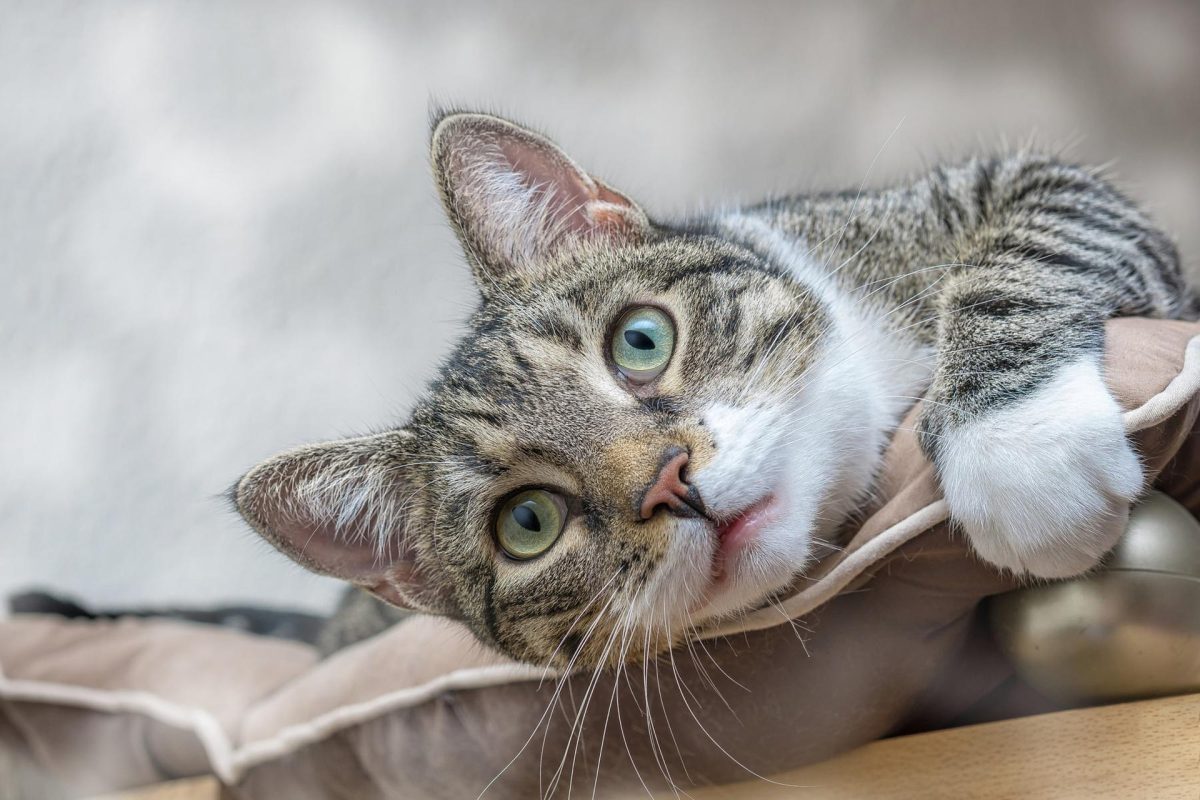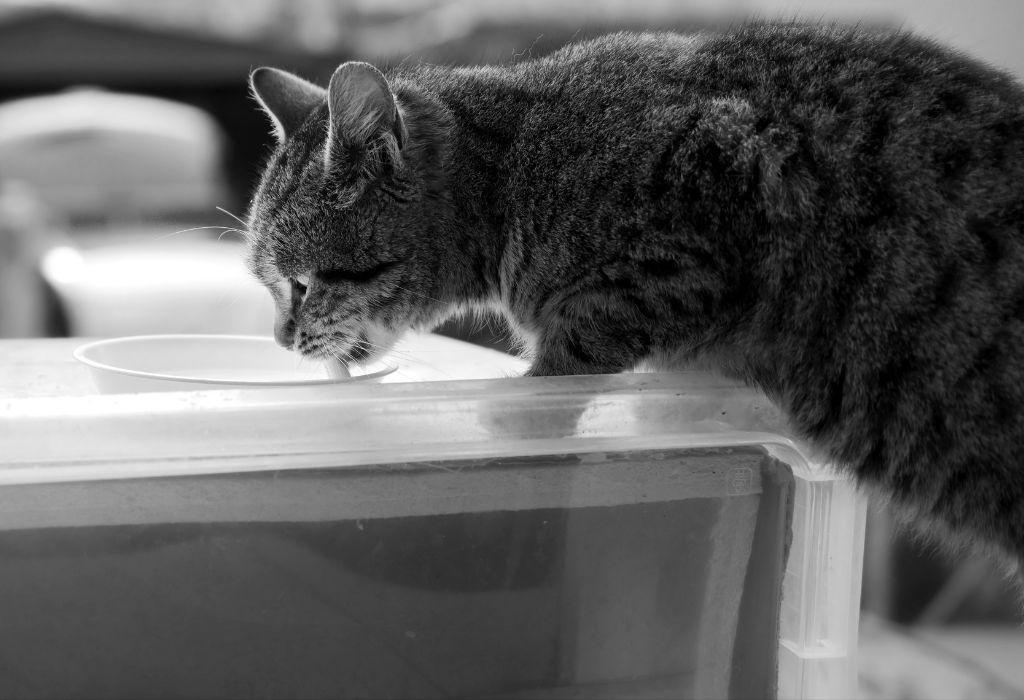
Cat Safety Tips: How to Ensure the Safety of Your Cat Sitting Clients
14 Jul 2023.
As a cat sitter, you want to make sure your kitty clients stay safe and healthy while their paw parents are away. Not only is cat safety an owner’s top priority, but a cat sitter’s as well—especially when you need to leave your fur friend alone between visits.
One of the major demands of cat sitting is knowing that you are responsible for each cat’s safety and welfare while their owners are away. It’s a lot of responsibility, and you should do your best to create a secure environment for each of your kitty clients. Not only will you keep Mr Whiskers healthy and safe, but you’ll show their paw parents that you are a competent and trustworthy pet sitter. Not sure what safety steps you should take? Below, Cat in a Flat breaks down the major cat safety tips every sitter should know.
Table of contents

Create a cat-safe environment
What’s the best way to create a cat-safe environment? Your kitty clients will probably be spending more time than usual alone while their owners are away, which means they’re also more likely to get into trouble! The first thing you should do as a sitter is put basic cat safety measures in place.
- Remove potential hazards such as toxic plants and flowers, chemicals, and cables lying around.
- For the cat’s safety, remove anything they can get tangled up in. This includes items like string, which can be dangerous for cats. Your furry client could choke on it or become entangled and unable to get free.
- Put away any bags you see around the home. Felines love playing with bags, but they can be a hazard. The cat may get caught in the handles or risk suffocation.
- Put away toys at the end of each visit. While it’s okay for cats to play with certain toys unsupervised, some they should play with only while you’re there. Hence, once you’ve spent time playing with your fur friend, put the toys away where the kitty can’t reach them. If you’re not sure which toys to put away and which to leave out, consult with your furry friend’s owner.
Lock up to ensure the cat’s safety
The last things you want is for a kitty client to run away.
- At the end of each visit, make sure to secure and lock the doors and windows.
- Some owners may ask that you allow their kitty access to an outdoor space such as a garden, balcony, or yard. If this is the case, make sure you chat with the paw parents beforehand so you know what to do if the cat goes missing.
- However, if you don’t feel secure allowing a cat outside, let their owners know beforehand. Most likely they will understand that it’s safer to keep Mr Whiskers indoors while they are away.
- NEVER return the keys until your furry friend’s owners are back home. Flight cancellations, train delays, and any other number of things could happen to prevent your kitty client’s owners from arriving back on schedule. It’s better for a cat’s safety that you keep the keys until the owners return. This way you can extend your cat sitting visits if there are any delays.

Ensure the cat has access to clean water and food
As a cat sitter, you should make sure your furry friend always has access to fresh water and adequate food—even when you’re not there.
- Only feed the cat the food their owner has indicated, and in the instructed quantities.
- If you want to bring treats along on your visits, check first to make sure it’s okay for Mr Whiskers to eat them. You never know how a feline will react to certain foods, and some cats may have food allergies.
- During your first meet and greet talk to the kitty’s owner about the food and treats their feline is allowed to have. For optimal cat safety you should follow their instructions to a ‘T’.
What’s the ideal temperature in the home for a cat?
To ensure the well-being and safety of your cat client you should check that their home is at an appropriate temperature. Cats do best in an environment where it’s neither too hot nor too cold. The ideal room temperature is usually between 20°C and 25°C. There are a few cat safety measures you should take when temperatures spike or plummet in the summer or winter.
Summertime cat safety:
- Switch on a fan or air conditioner to keep your furry friend’s home cool.
- Make sure the cat has access to shady areas and, if necessary, move their beds away from hot, sunny spots.
- Know the signs, how to prevent it, and what to do if you believe a cat has heatstroke.
Wintertime cat safety:
- Adjust the heating to a comfortable temperature.
- Create cosy sleeping places for your furry friend. Place beds next to radiators or in sunny windows.
- Know the signs and what to do if you suspect a kitty is freezing. Also know how to recognize wintertime illnesses like the cat flu.

Safety tips for playing with cats
Daily playtime is essential to help your feline clients stay happy and healthy.
- Make sure your furry friend has enough toys and activities so they don’t get bored. These include scratching posts and toys they can play with on their own.
- If your kitty client doesn’t have enough toys or seems to have grown bored of their toys, talk to their owners. You may need to bring some new toys into the home to keep your furry client entertained, but always ask first!
- Spend 15-20 minutes each visit playing with Mr Whiskers. The more energy a kitty lets off, the less likely they are to get into trouble when you’re not around!
Kitchen safety for cats
The kitchen is one of the most hazardous parts of the house, so it’s up to you to make it a safe space for your fur friend.
- Remove toxic food or objects out of paw’s reach.
- Make sure the stove is turned off and that there are no hot surfaces where your kitty client can injure themselves.
- Clean off all surfaces. Don’t leave any plates, silverware, or cups sitting out on the counters or tables. A cat may find a wayward item interesting and accidentally break it. Glass shards can be dangerous to Mr Whiskers’ paws!
How often should cat sitters check in and send updates?
Good communication is a key part of cat safety. Make sure you are checking in on your kitty clients regularly and keeping their owners updated on their well-being.
- During the meet-and-greet, ask the owners about the optimal times during the day to visit their kitty.
- Try to visit your cat client at the same time every day. Felines love routine and will feel more comfortable with a set schedule.
- Unless the owner indicates otherwise, update them daily to let them know how their feline is doing. You’ll earn bonus points (and show you’re a stellar cat sitter) if you send photos of their fur baby too!
- If there are any issues or concerns, let the owners know IMMEDIATELY. Never try to solve an issue on your own. For example, if you’re worried the Mr Whiskers might be too cold ask the owners about turning up the heat. Or, if you’re worried a cat might be falling sick, let the paw parents know right away.
While cat safety should be a priority all year ‘round, you should pay special attention during major holidays like New Year’s Eve and Christmas. Learn more about cat safety during the holidays by reading up on common dangers for cats at Christmas and how to survive New Year’s Eve fireworks with a cat!
- #catinaflat
- Katzenbetreuer
- Katzenbetreuung
- Katzensitter
- Katzensitter Service
- Katzensitter Tipps
- Sicherheit für Katzen


